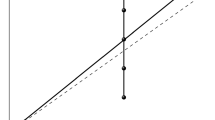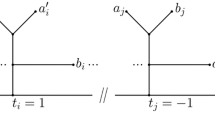Abstract
In this article the question of reconstructing a phylogeny from additive distance data is addressed. Previous algorithms used the complete distance matrix of then OTUs (Operational Taxonomic Unit), that corresponds to the tips of the tree. This usedO(n 2) computing time. It is shown that this is wasteful for biologically reasonable trees. If the tree has internal nodes with degrees that are bounded onO(n*log(n)) algorithm is possible. It is also shown if the nodes can have unbounded degrees the problem hasn 2 as lower bound.
Similar content being viewed by others
Literature
Buneman, P. 1971. “The Recovery of Trees from Measures of Dissimilarity.” In:Mathematics in the Archaeological and Historical Sciences, F.R. Hodson, D.G. Kendall and P. Tautu (Eds), pp. 387–395. Edinburgh University Press.
Hein, J.J. 1988. “A Fast Tree Reconstruction Method.”Molec. biol. Evol., submitted.
Hendy, M.D., C.H.C. Little and D. Penny. (1984). “Comparing Trees with Pendant Vertices Labelled.”SIAM J. appl. Math. 44, 1054–1065.
Waterman, M.S., T.F. Smith, M. Singh and W.A. Beyer. 1977. Additive Evolutionary Trees.”J. theor. Biol. 64, 199–213.
Author information
Authors and Affiliations
Rights and permissions
About this article
Cite this article
Hein, J.J. An optimal algorithm to reconstruct trees from additive distance data. Bltn Mathcal Biology 51, 597–603 (1989). https://doi.org/10.1007/BF02459968
Received:
Revised:
Issue Date:
DOI: https://doi.org/10.1007/BF02459968




